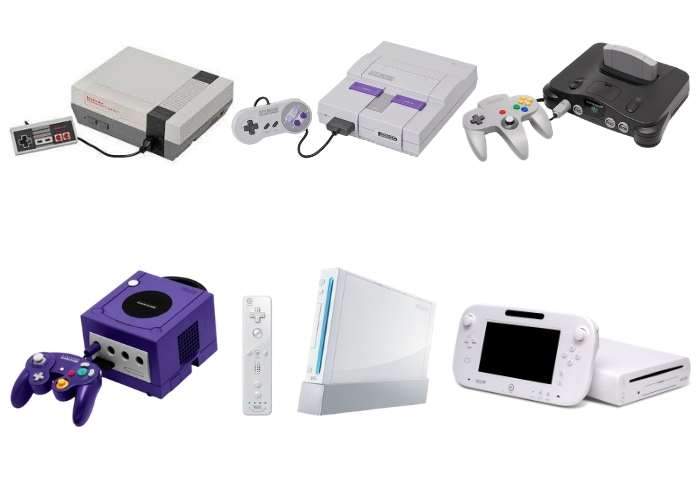
In the following article we will explain what the Life cycle of a productits 5 stages and how it should be used within business strategies.
Just like humans; who are born, grow, reproduce and die, the products also have a Lifecycle. It all starts with an idea, which is analyzed to determine its viability, developed, materialized and introduced to the market, but is finally replaced by something new and/or better.
What is the life cycle of a product?
The product life cycle is the process a product goes through from when it is first introduced to the market until it declines and is removed from the shelves.
In other words, it describes the stages of a product from its birth to its discontinuation. It is also a strategic tool that helps companies plan new product development and refine existing products.
In most definitions, the start of the life cycle is considered as the launch or introduction to the market. Some others take into account as a starting point, the generation of the idea and its development.
While some products may remain on the market for many years, all eventually die. This is due to several factors including market saturation, increased competition, decreased demand, falling sales, and technological development.

What are the stages of the life cycle of a product?
The life cycle of a product is commonly divided into four stages: introduction, growth, maturity and decline. However, if we take into account the gestation of the idea and its materialization, we could add a 5th stage: developing.
Below you will find in detail the 5 stages of the life cycle of a product.
1. Development.
In this stage, the research process is carried out to find out the profitability of the idea before it is launched on the market. This stage is not usually included in the product life cycle, because at that time there is no product as such.
Additionally, during this stage prototypes are created, feasibility tests are implemented and launch strategies are analyzed. It is one of the most expensive stages, since a lot of money is being invested without having started to sell. Some companies copy successful products to avoid this stage.
2. Introduction.
Once the product has been developed, the next stage is to introduce it to the market. During this stage, marketing and promotion are at their highest point. Much of the budget is invested in promoting the product and getting it into the hands of consumers. The main focus of the company and its marketing strategies is to publicize the product and its benefits.
In the introduction, companies build their brand, test distribution channels, and try to educate potential customers about the product. If those tactics are successful, the product moves on to the next stage: growth.
3. Growth.
In the growth stage the product has proven to be successful. Demand increases, production increases and the company begins to receive the fruits of the investment made during the previous stages. As the market expands, more competitors enter the arena, driving prices down. However, sales often increase in volume and generate higher revenue.
During this stage, customer feedback is used to make changes that improve the features and functionality of the product.
In this phase, marketing strategies move from making customers aware of the product to establishing brand presence. This so that consumers choose them over competitors.
4. Maturity.
Once the product has been on the market for some time, competition increases and the fight to keep customers becomes more intense. In addition, sales begin to level off as a sign of market saturation.
As a consequence, prices decrease and marketing strategies are aimed at defending themselves from competition through differentiation. Because the market is highly saturated, it is usually in the maturity stage of a product that less successful competitors start to disappear.
Before you continue reading we would like to ask you a favor. Simply vote from 1 to 5 to see how you’ve found this article so far. Thank you very much!
5. Decline.
Unfortunately, most products have an ending. Whether it’s because of fierce competition, loss of interest from consumers, or the emergence of a new and better product. Sooner or later a stage of decline is reached.
At this stage, sales drop significantly and consumer behavior changes as there is less demand for the product. The company loses more and more market share and competition tends to deteriorate sales.
To extend the product life cycle, companies can implement new advertising strategies; reduce its price; add new features to your value proposition; explore new markets or improve product packaging.
Marketing in the decline stage is usually minimal or aimed at already loyal customers.
Strategies based on the life cycle of a product.
Product life cycle analysis is key to decision making and the design of new strategies. Taking into account what stage a product is in, pricing, sales, and marketing strategies can be determined.
Likewise, decisions can be made related to the development of new products that continue to generate profits after the decline of the existing ones. analyze the Life cycle of a product it can help companies know when they need to reinvent or shift their goals in a new direction.
Products that have completed their cycle and left the market.
History has shown us how some brands and products have been created, embraced by consumers and then withdrawn from the market. Find some that are in the decline stage or have already disappeared.
The typewriter: Despite having been an essential tool for decades, in the 1990s it began to disappear due to the introduction of computers.
Telephone lines: Although this product has not completely disappeared, its use is increasingly reduced. The use of mobile phones and messaging applications are currently the first choice of consumers. Due to this the fixed telephones they are also a product in decline.
iPod: The product that turned apple into the technology giant we know today was the iPod. However, its sales have been greatly reduced because all mobile phones have the same functions.
Video and photographic cameras: As you know, current mobile phones have the same functions as these products; which has made them enter the stage of decline.
Cassettes, VHS, diskettes, CD’s: All these storage products that were once very useful to us have passed into history. Now all the information is in the cloud and can be accessed from any device with an internet connection.
Conclusion.
By examining where in the life cycle a product is located, companies can head off the bumps from the competition and continue to innovate to stay one step ahead. It is a way to protect yourself and manage to maintain profits for longer.
Some of the world’s most successful products have been in the maturity stage for a long time. However, they have undergone updates and redesigns to keep them differentiated.
If the sales of a product are declining, it is necessary to know in which stage of the cycle it is. Products fall into decline due to improved competitive offerings, changes in consumer behavior, or because there is no longer a need for the product.
You might also be interested in:
- What is organizational culture and why is it important for a company.
- Marketing mix. What is it and what are its variables?
- Statement of income. What is it and how to do it.
And remember, if you are really interested in creating your own business, you can read our book “How to create a company while working: Discover how to manage your time, manage your money and motivate yourself while creating a company and working for another” , where you will find all the information you need to found your own company, without having to leave your job.



